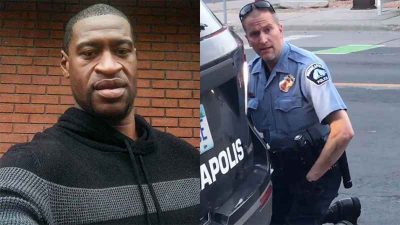“Let’s Burn the Whole Thing Down”: Death, Protest and George Floyd

Mobs are unruly, headless things. The message is the action. The platform is often violence. But what is happening across the United States cannot simply be labelled as a looting-leads-to-shooting episode. It ranks as another chapter of enraged despair.
It all began with a savage act in South Minneapolis, a killing grotesque for its indifference. The hunter in this gruesome Monday spectacle of cruelty proved to be a policeman from the 3rd Police Precinct, Derek Chauvin; the quarry, a black man by the name of George Floyd. As Floyd was held down by the knee for almost nine minutes, suffocating to death as he pleaded for his life, the Chauvin impassively went about his deadly task. The pulse ceased.
A country began to spasm, though it first began with a peaceful march of sorrow at the corner store next to the site of Floyd’s arrest.
With the United States topping the global chart in coronavirus deaths, with numerous parts of the country easing lockdown restrictions as unemployment has surged, the release over the week became atavistic, vengeful. Mixed in were also protests of desperate sadness and anger, with sentiment very much against violence as a weapon of choice. Police were attacked but in other cases, notably that of Genesee County Sheriff Chris Swanson in Flint, Michigan, they joined protests and expressed a wounded solidarity.
Buildings were left burning; stores destroyed and looted. Curfews were imposed. The National Guard was called out – in Minneapolis, for the first time since the Second World War. Tear gas and rubber bullets have been used liberally. Vehicles have been driven into protesters in Minneapolis and New York City. In the chaos, even a crew from CNN was arrested. A fog of militarisation has descended heavily.
The panoramic violence provided sustenance for every interpretation on cause and inspiration. There was the civic-society hating hooligan said to be in the ascendancy; the daring, incendiary white supremacist having a go; the antagonised Black American furious and redressing grievances; the foreign agitator keen to exploit divisions.
Minnesota Governor Tim Walz’s own assessment put the blame on agitators from out of state who cared not one jot for the demise of Floyd. Justice for him, and any endeavours to achieve it for the slain resident, did not “matter to any of these people who are here firing upon the National Guard, burning” businesses and “disrupting civil life”. In agreement, Minneapolis Mayor Jacob Frey dismissed any idea that this was a local poison, making its way through the body of the city.
“The people that are doing this are not Minneapolis residents. They are coming in largely from outside of the city, from outside of the region to prey on everything that we have built over the last several decades”.
Such diagnoses ignore the scarring caused by killings inflicted since 2016. Floyd’s death was the fifth caused by police forces since 2018.
The norm, generally speaking, has seen those involved spared charges. As Hugh Eakin observes on such prevalent impunity, “Behind such a dismal record of failed accountability, there is now a widespread sense that structural racism in the city’s administration and law enforcement runs deep.” Charges of third-degree murder and second-degree manslaughter have been filed, but will they stick? Hennepin County Prosecutor Mike Freeman was pleased to note that this was “by far the fastest that we’ve ever charged a police officer.”
Then there was the Trump administration’s own stretched interpretation, presenting it with a chance to settle a long standing score.
In a divided country, you take to barricades rather than remove them.
“The United States of America will be designating ANTIFA as a Terrorist Organization,” came the aggressive tweet from President Donald Trump. A flavour of what is to come was also given by Trump’s ever loyal US Attorney General William Barr on Sunday.
“The violence instigated and carried out by Antifa and other similar groups in connection with the rioting is domestic terrorism and will be treated accordingly.”
Such measures are likely to fall foul of the Constitution, but that is a procedural irrelevance in the game of electioneering rhetoric. Trump’s point is to show that the US is broken, and that he is the best manager of a ruined MAGA Republic.
The brutality and poignancy of this Minnesota decline into pyromanic purgatory and tear-stained sorrow was captured by the words of rapper Killer Mike, a man who professes to having “a lot of love and respect for police officers”, being the son of one. “I watched a white police officer assassinate a black man. And I know it tore your heart out.”
At a press conference with Atlanta Mayor Keisha Lance Bottoms, he felt “duty-bound to be here to simply say that it is your duty not to burn down your house for anger with an enemy.” Fortify it, he suggested with biblical intonation, “so that your way be a house of refuge in times of organization.”
But it was the words that followed that bring the matter into crystalline focus. Unalloyed anger; a desire to build from the ashes, was vital. To have purpose and worth, you needed to burn the whole thing down. Killer Mike’s suggestion, as you preserve your own home, is to take the matches to the system itself, one “that sets up for systemic racism”. Prosecute the offenders; get convictions. Unfortunately for him, that distinction may prove too fine in the groans and recoil that follows. Justice for Floyd, even before it starts in earnest, has already been eclipsed.
*
Note to readers: please click the share buttons above or below. Forward this article to your email lists. Crosspost on your blog site, internet forums. etc.
Dr. Binoy Kampmark was a Commonwealth Scholar at Selwyn College, Cambridge. He lectures at RMIT University, Melbourne. He is a frequent contributor to Global Research and Asia-Pacific Research. Email: [email protected]


